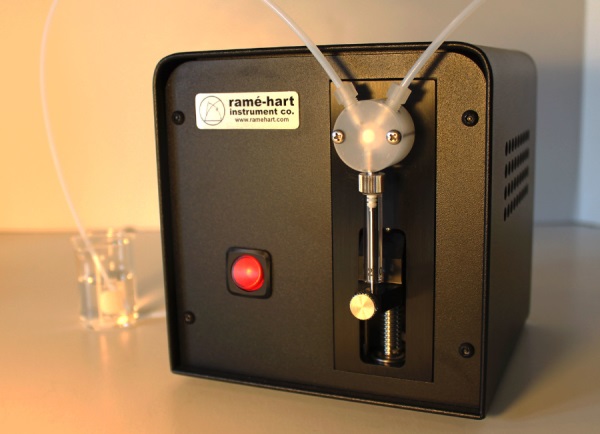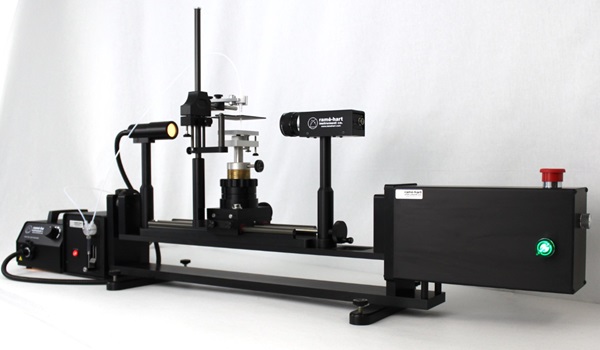|
March
2024 |
| What's the best way to measure advancing and receding contact angle? |
|
The first questions, however, are: What is the advancing and the receding contact angle? And why is it important to surface scientists? Conventionally, the deposition of a droplet onto a surface yields a singular equilibrium contact angle, offering a limited one-dimensional perspective of the wetting dynamics. However, for any given solid-liquid interface, there exists a spectrum of potential contact angles, ranging from the maximum, termed the advancing contact angle, to the minimum, designated as the receding contact angle. The difference between these two angles yields the contact angle hysteresis, a important metric facilitating a focused understanding of surface morphology and heterogeneity. A small contact angle hysteresis observed on a surface in the Wenzel state, for example, implies a higher degree of homogeneity relative to chemical and structural composition. In short, the contact angle hysteresis is a more informative metric compared to a singular, static contact angle measurement when it comes to characterizing a surface and its wetting properties. The two most common techniques for measuring advancing and receding contact angles are the tilting plate method and the add/remove volume method. Preference for either method often hinges on the availability of equipment. Typically, the add/remove volume method holds broader appeal to our customers due to its versatility, as it can be executed on any ramé-hart instrument - even the most basic setup.1 An instrument equipped with an Automated Dispensing System is capable of measuring advancing and receding contact angle in a much more automated fashion.2
In addition to requiring a minimal instrument setup, the add/remove volume is also suitable for a wide range of surface types and conditions, including rough or heterogeneous surfaces. It can effectively capture the dynamic wetting behavior and contact angle hysteresis across different surface morphologies. When performing the add/remove volume method to measure contact angles, the presence of a needle within the droplet can introduce several sources of distortion and inaccuracies, particularly relative to the measurement of the receding contact angle. As the needle penetrates the droplet, it can disrupt the liquid-air interface, causing deformation of the droplet shape. This mechanical interference can lead to erroneous measurements of both the advancing and receding contact angles - but is especially the receding contact angle. The needle can also induce the formation of a meniscus at the liquid-air interface, particularly if the needle is not perfectly aligned or if there are imperfections in its surface. This meniscus formation can obscure the true contact angle values, making it challenging to accurately measure the contact angles, especially during the receding phase when the droplet is retracting. The alternative method for measuring the advancing and receding contact angles is the tilting plate method. This involves depositing a drop on a surface and then gradually tilting the surface while taking contact angle measurements. The downhill, or larger contact angle becomes the advancing contact angle while the uphill, or smaller contact angle is the receding contact angle. If the drop rolls off, then that last valid measurement captures both the advancing and receding contact angles. If the drop stays pinned even when the tilt angle reaches 90°, then the final left and right contact angles are captured and used as the advancing and receding contact angles.
Drops in a Cassie state on a nanotextured surfaced will typically exhibit a very low roll-off angle and a very small contact angle hysteresis.3 Most surfaces, however, will receive a drop in the Wenzel state. In those cases, the hysteresis effectively communicates the heterogeneity of the surface. As the heterogeneity of a surface in the Wenzel state increases, so too does the observed contact angle hysteresis. An increase in heterogeneity means a greater variation in surface energy from one spot to another, a greater roughness, differences in chemical composition, varying topology, or some combination thereof. All of these factors promote increased pinning which results in both a larger roll-off angle and a larger contact angle hysteresis. In summary, the add/remove volume method offers several advantages, including its simplicity and ability to provide accurate measurements using even the most basic instrument without any a tilting base. Additionally, it allows for the direct manipulation of the liquid volume on the surface, enabling precise control over the wetting process. However, this method may be limited by its sensitivity to surface heterogeneity and may not be suitable for highly heterogeneous surfaces. And as noted previously, the receding contact angle is often not accurately captured due to the disturbance caused by the dispensing tip or needle. In contrast, the tilting plate method offers a more versatile approach, capable of providing detailed information about wetting behavior on various surfaces. It allows for the measurement of advancing and receding contact angles simultaneously and can account for surface roughness and heterogeneity. Nonetheless, the tilting plate method requires more sophisticated equipment, making it potentially less accessible for some researchers. Overall, while both methods have their advantages and limitations, the choice between them depends on factors such as the specific characteristics of the surface under study and the available resources and expertise. Notes |
| Products Mentioned |
|
In the above essay, we mentioned the following ramé-hart products: Automated Dispensing System, p/n 100-22, greatly increases drop volume precision but with DROPimage Pro or DROPimage Advanced, can also be used to precisely automate advancing and receding contact angle studies using the add/remove volume method. The step volume can be set to as low as 0.02 µl using the 50 µl syringe. The Automated Dispensing System is supported on every instrument sold by ramé-hart. Manual Tilting Base, p/n 100-25-M, is compatible with any ramé-hart instrument that is younger than 25 years old. This accessory allows the user to manually (via a hand crank) tilt the instrument between 0° and 90° to capture the roll-off angle as well as the advancing and receding contact angles. It can also tilt between 0° and -90°. Automated Tilting Base, p/n 100-25-A, requires DROPimage advanced and is supported on Models 250, 260 and 500. Models 290 and 590 include the Automated Tilting Base. This software-controlled and motor-driven accessory greatly automates the measurement of the advancing and receding contact angle using the tilting base method - as well as capturing the roll-off angle. A methods-based experiment can easily be built to initiate a series of measure-and-tilt sequences until the desired results are obtained. If you are interested in a quotation for any of the above accessories, feel free to reach out to us. If you already have a ramé-hart instrument, be sure to let us know the serial number so we can check compatibility. We look forward to hearing from you. |
|
Regards,
Carl Clegg |


